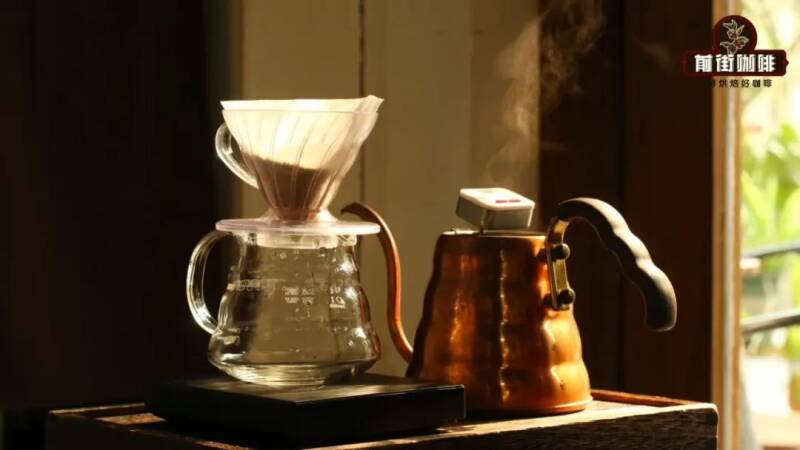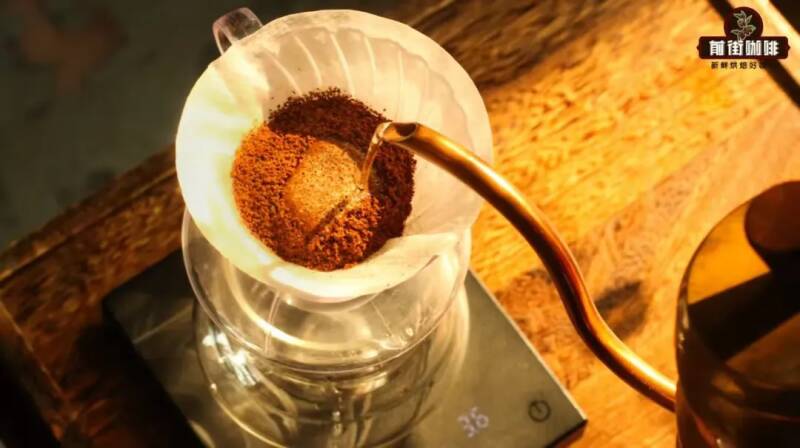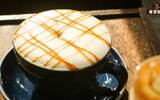A lightning guide for beginners in making coffee! Can coffee be brewed with 100°C hot water? What is the effect of hand-brewed coffee blocking? Is coffee really the most bitter taste in the tail?
With its extremely high fault tolerance rate and excellent flavor performance, hand-brewed coffee has become one of the top-stream extraction methods after the popularity of boutique coffee. At the same time, because the operation is simple and the investment threshold is low, many friends have purchased their own hand-making equipment and began to teach themselves how to make coffee by hand at home.
To be reasonable, it is not difficult to teach yourself to make coffee by hand, because today's Internet is very developed, and we can easily collect various tutorials related to coffee brewing from the Internet. Whether it is coffee equipment, brewing steps, techniques, parameters, or even various other details, we can get relevant knowledge sharing for free from the Internet. However, because the content is too complicated and many of them lack systematic sorting out, friends often fall into misunderstandings in cognition and operation, which adds many obstacles to themselves and makes it difficult to break out good coffee. So today, Qianjie will come to share what pits we can easily step on when we get in. Everyone can pay attention to and avoid lightning strikes!
1. The use of parameters often has misunderstandings about the use of parameters, such as: "The higher the water temperature used, the better the quality of the beans." The implication of this sentence is that only high-quality coffee beans can use extreme parameters. It's like boiling at 96°C or 97°C.

There is no denying that high-quality coffee beans are not easy to overturn even when paired with extreme parameters. However, what we need to know is that the use of parameters does not depend entirely on the coffee beans used, but mainly depends on our brewing method and extraction parameters. Decide. Take water temperature as an example. Water temperature is not the only variable that affects extraction. In addition to water temperature, there are other factors such as grinding, time, and stirring method that will affect extraction. As long as other parameters are matched properly, even if the water temperature we use when brewing is as high as 96°C, 98°C, or even 100°C, we can still easily brew a pot of delicious coffee.

Conversely, the same is true for other parameters. Even if the coffee powder is ground as fine and the extraction time is long, as long as parameters other than themselves can be reasonably matched with it, a good cup of coffee can be brewed, regardless of whether the brewed object is good or bad.
2. I am accustomed to using water to collapse the powder wall. Many friends like to do one thing (including the front street) when they first start making coffee, which is to wash the coffee powder that has been attached to the edge of the filter cup during the brewing process with water. Go down. The purpose is simple-in order to allow this part of the coffee powder to be fully extracted. Because generally the range of water injection does not include the edges, these coffee powders that have been built on the edges cannot be washed away by hot water.
Although this can indeed allow the coffee powder on the edge to be more fully extracted, under improper use, it can easily cause the originally delicious coffee to become less delicious. Because the currently more commonly used filter cups are equipped with diversion ribs, the existence of these ribs can increase the space for the coffee powder to exhaust, and also increase the channel for water flow. If we use hot water to wash the coffee powder on the edge while using these filter cups, then the water rushing onto the filter cup will directly break through the filter paper and slip away from the edge, forming so-called bypass water.
The appearance of bypass water will affect the extraction of coffee and easily make existing coffee dull. Moreover, doing so will also make the powder bed thicker and make it easier for the fine powder originally attached to the edge of the filter cup to be washed to the bottom, making it more difficult to enter the water. Therefore, Qianjie does not recommend that everyone use this method unconditionally. Although the coffee powder attached to the edge of the filter cup is not extracted as fully as it is stirred, it can give the coffee a more layered feeling due to the difference in extraction rates.
3. I prefer high-level water injection. As we all know, the height of water injection will affect the agitation intensity of the water column. The higher the water injection height, the stronger the agitation of the water column. Then some friends will use a higher height to inject water than usual for a higher extraction rate.
Although high water levels do increase the intensity of stirring, there are limits. Qianjie found that many friends increased the height of water injection without restrictions, but the coffee that was finally washed out was lighter and the extraction rate was lower than the previous one. The reason why this situation occurs is that the water injection position is too high! In the gap between the hot water coming out of the spout and coming into contact with the powder bed, its temperature will continue to be absorbed and lost by the surrounding air. The higher the water level we inject, the more the water temperature will drop. Therefore, when the water injection height is too high, the extraction efficiency will be reduced due to the large amount of hot water being extracted. (Pine House brewing uses this method to reduce the water temperature)
Moreover, if the injected water is not large enough, then when the water injection height is too high, the hot water will not be able to maintain the posture of the water column, but will become intermittent water droplets, which will make it difficult for the water droplets to stir the coffee powder. Natural extraction efficiency will also be greatly reduced. Therefore, Qianjie does not recommend that everyone increase the water injection position without limit. Normally, it is enough to inject water one fist away from the powder bed. If it is higher, it will be two fists away.
4. Not bulging when steaming means that the coffee is not fresh. Next, there are two content that are often shared by the front streets, because there are really too many friends asking about these two topics backstage. Many friends will give feedback to customer service after buying coffee beans at a shop on Qianjie, saying that the coffee powder layer is not bulging when steaming, because the beans are not fresh enough.
Of course not. All coffee beans shipped on Qianjie are roasted within five days, so naturally there is no problem of being stale. Whether the powder bed can bulge a "hamburger"-like bag during steaming depends not only on the freshness of the coffee beans, but also on the parameters during extraction. Because we all know that bulging during steaming is a phenomenon that is braced by carbon dioxide. In addition to the roasting degree and freshness of coffee beans that affect the carbon dioxide content, whether the parameters are reasonable will also affect the degree of powder bed bulging, because the high and low extraction efficiency determines the rate of carbon dioxide emission.
Still use water temperature as an example. The higher the water temperature, the higher the extraction efficiency, and vice versa. Then, when the water temperature is higher, the faster carbon dioxide will escape from the coffee beans and form a "burger". If the water temperature is not so high, the carbon dioxide emission rate will be slow. Naturally, the coffee powder bed will not bulge so much in a short period of time. The same is true for the grinding degree of coffee powder. So we need to know that the size of the drum during steaming is not only affected by the freshness and roasting degree of the coffee, but also by the parameters during extraction. If the bulge of the powder bed during steaming is not as big as usual, in addition to checking the freshness of the coffee beans, we can also check whether the extraction parameters have changed.
5. Misconception of the node where bitter taste appears Many friends have certain misunderstandings about the node where bitter taste appears in coffee, and believe that the bitter taste of coffee is mainly dissolved in the tail. Therefore, we can often see that these friends who have misunderstandings add some "unique" operations, such as interception, during the brewing process in order to avoid bitterness. By cutting off the coffee liquid at the end so that it does not flow into the cup, the coffee will not have a bitter taste.
But obviously, this is a misunderstanding. The bitterness of coffee does not dissolve only at the end. The main reason why many friends misunderstand is that they misunderstand the sentence "The tail segment is the node where bitter substances dissolve in large quantities" to "The bitter taste can only dissolve in the tail segment." In fact, from the moment water comes into contact with coffee powder, the bitterness has begun to be continuously released. However, the rate at which the bitter substances dissolve is relatively slow, so even if they are extracted to the end, after the acid and sweet substances are almost dissolved, the bitterness is still continuously dissolved.
If we don't use the extraction parameters correctly, even if we use the interception method, there will still be obvious bitterness in the coffee. Because the extraction efficiency is too high, a large amount of bitterness has been dissolved before the interception is blocked. Therefore, we need to know that bitterness is not only dissolved at the end. The best way to avoid bitterness is not to intercept, but to control the extraction parameters. At the same time, interception is not an operation that can be used at will. So, the above are some of the "pits" that are easy to step on when self-taught hand-punching recently collected on Qianjie. You can compare them to see if there are any pits you have stepped on ~
- END -
Important Notice :
前街咖啡 FrontStreet Coffee has moved to new addredd:
FrontStreet Coffee Address: 315,Donghua East Road,GuangZhou
Tel:020 38364473
- Prev

How to do proportional steps for 400 times of foamed coffee? What is the reason why espresso cannot foam?
Whenever I open a social networking site, the homepage will push a tutorial on making foam coffee to Qianjie every once in a while. After searching, I find a full picture. As more and more people try it at home, failure cases are beginning to appear frequently. Many netizens say that the foam coffee they make is simply "completely different" from the original version, and it is not
- Next

What is the difference between caramel macchiato and latte? Is caramel macchiato coffee? How to make caramel macchiato?
First mix the vanilla syrup with the espresso, then add the steamed milk to make the foam, and finally pour caramel sauce on the white and dense surface of the foam and draw a pattern. This is a unique milk coffee-caramel macchiato-launched by a world-renowned coffee chain in the 1990s. (In fact, it is added
Related
- Why are the coffee in some coffee shops not enough after being frozen? What should I make up for my American latte cappuccino coffee after being frozen?
- How much water does it take to steam coffee by hand? Why is the coffee brewing and steaming time 30 seconds? What is the purpose of steaming coffee?
- The suspected drink contains too much caffeine! Overlord Tea Lady responds urgently!
- Starbucks rejects antique paper coupons?! Netizen: Missed marketing opportunities!
- What ratio of water temperature and ground does the smart cup method use to press coffee? The difference between brewed coffee and filtered coffee?
- What is the standard process for the purpose of coffee cup testing? What is the difference between hand-brewed coffee and cup testing?
- How to use hand-brewed coffee paragon small golden balls? How does cold coffee lock in the aroma of coffee?
- Is American coffee black? What is the difference between American coffee and drip coffee?
- Unexpected! Well-known tea beverage brand Lele Tea will withdraw from the Zhengzhou market!
- Starbucks enters the fashion and beauty industry?! Netizen: Give me an ice American eye cream

